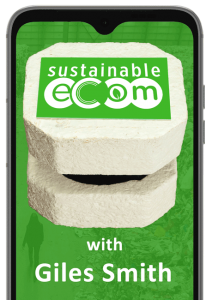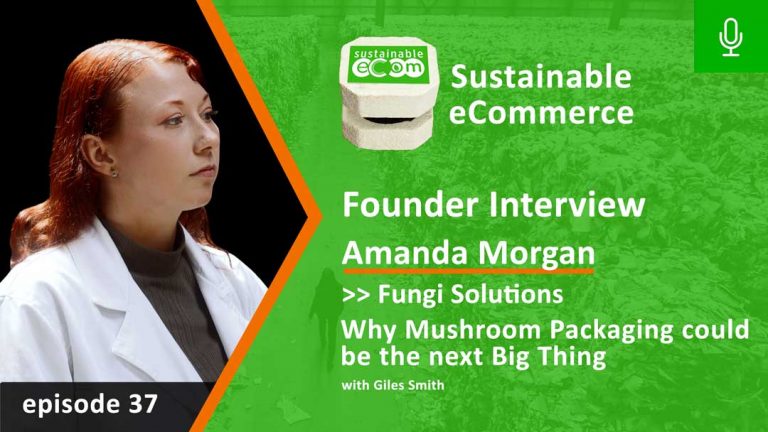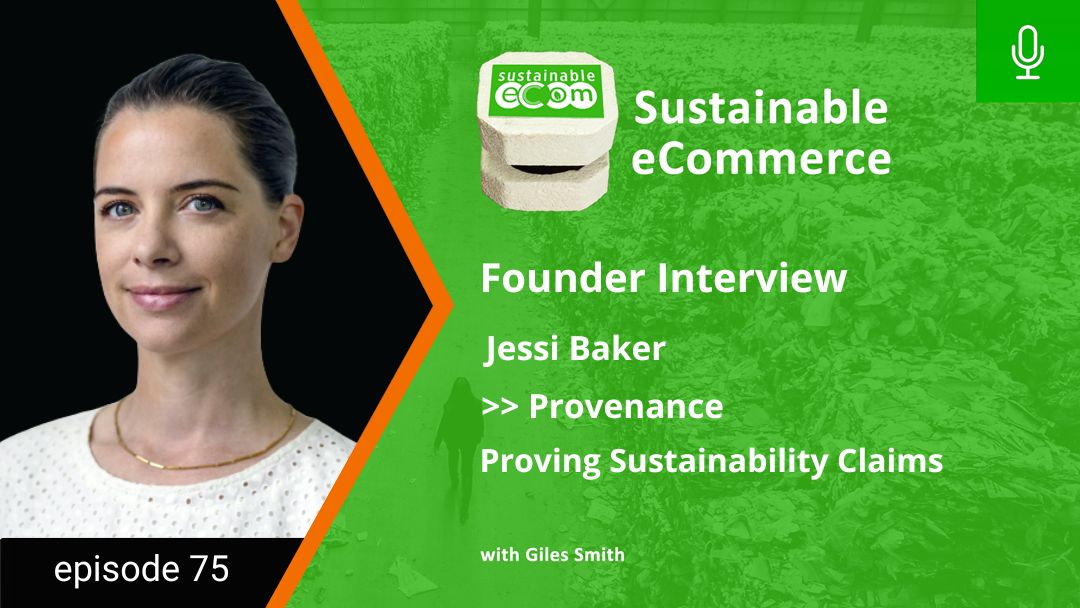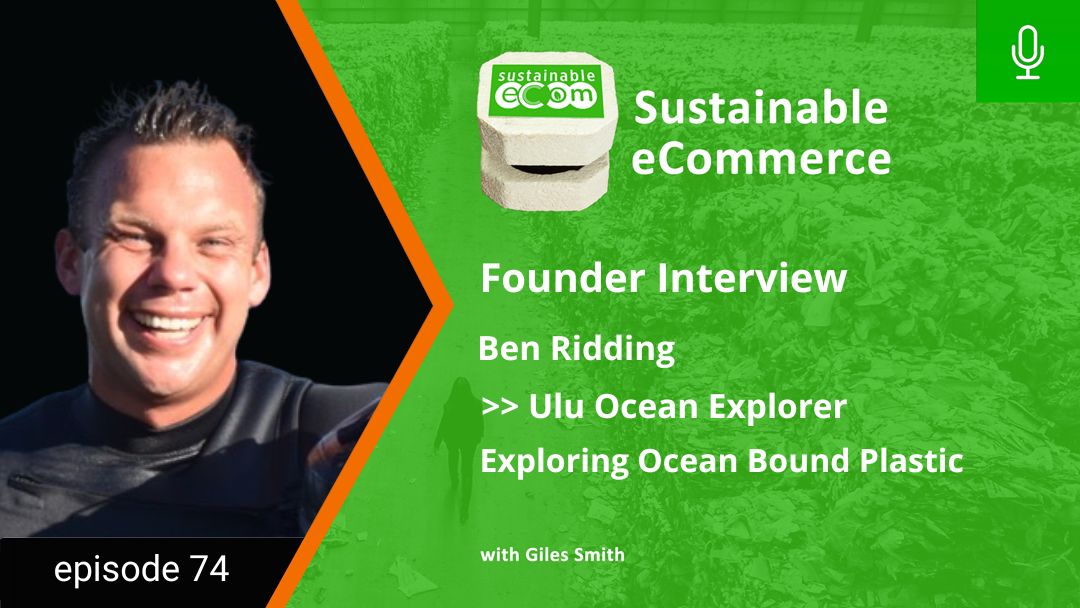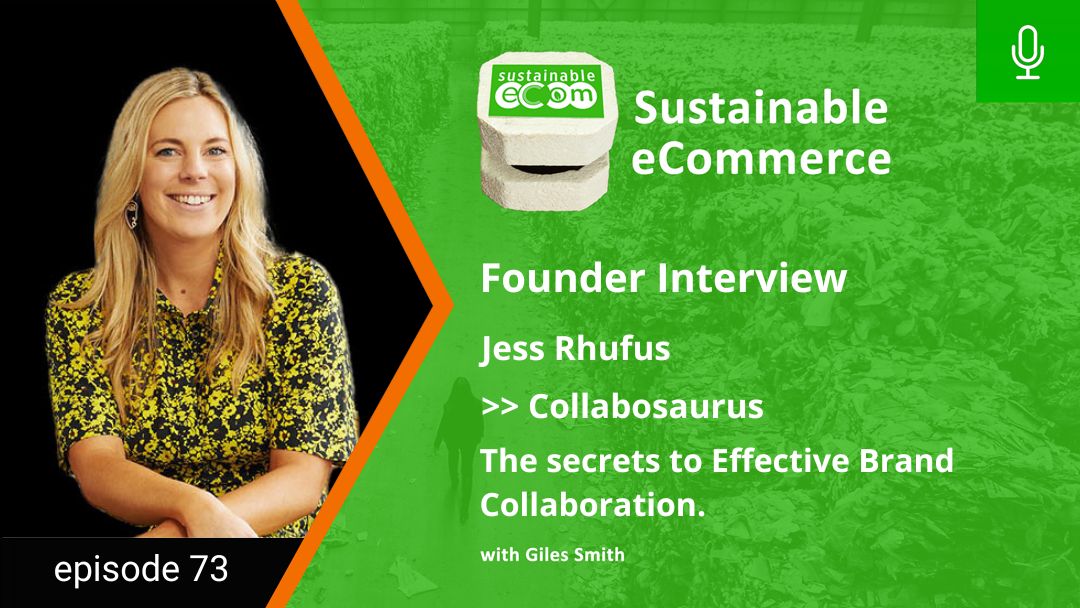Welcome to Episode 37 of the Sustainable Ecommerce Podcast!
There is no doubt that as an industry, both making physical products and shipping them to customers, we have some challenges around packaging.
We’ve already had some sustainable packaging suppliers on the show including the Better Packaging Company as well as HeapsGood, but the sharp eyes among you may have noticed the logo for this podcast includes Mushroom mycelium block.
Back when we were just starting up the podcast I thought that mushroom packaging was one of the coolest and most interesting material development concepts in the sustainable ecommerce space, and I still do.
For that reason, In our last interview of 2022, I wanted to take us back and explore this space a little further.
My guest today is Amanda Morgan, Co-Founder and CEO of Fungi Solutions.
Their mission is to divert material from landfill are repurpose it in the production of alternatives to single use plastics.
In this interview we learn just how important fungi can be in both the reduction of trash as well as fighting climate change, and of course how you can incorporate mushroom packaging in your supply chain.
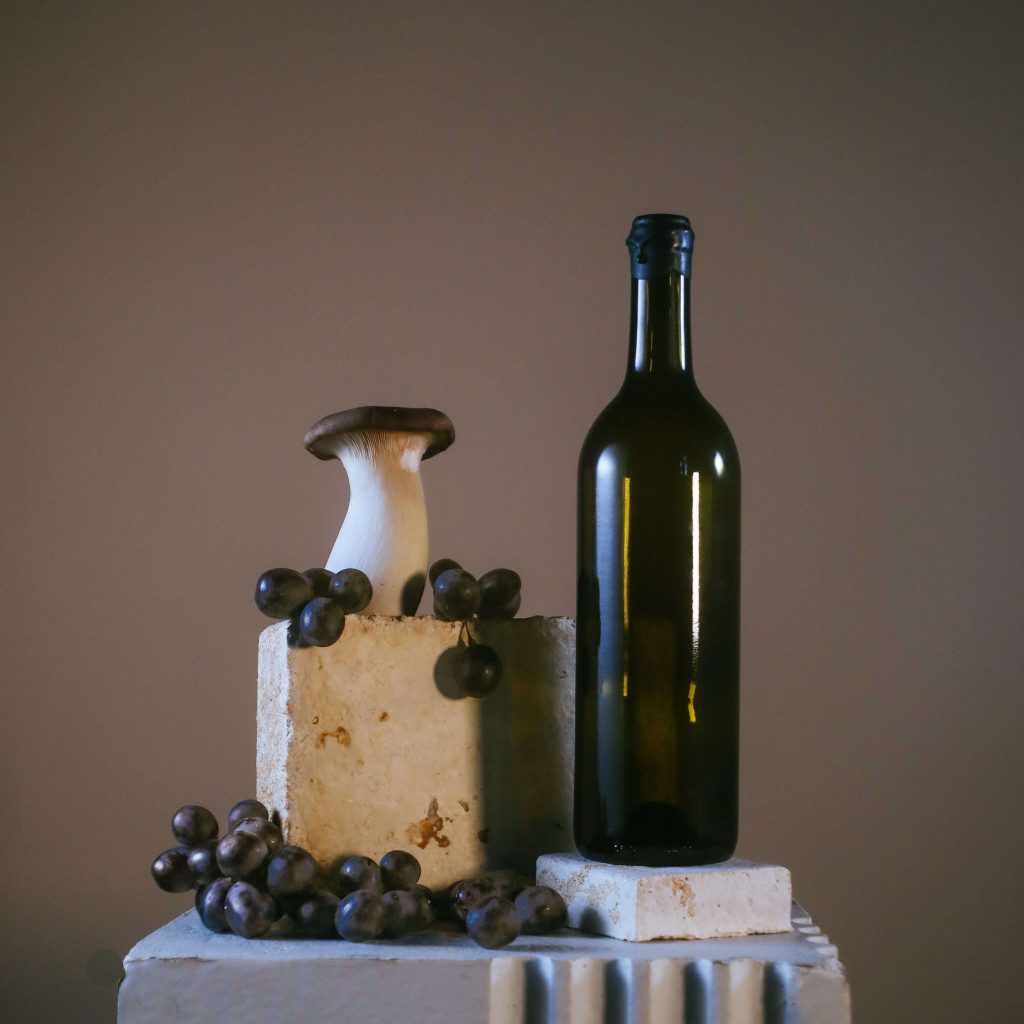
Introducing Amanda Morgan & Fungi Solutions
Amanda is the co-Founder, CEO and Head of R&D at Aussie start up Fungi Solutions. Their Mission is to sequester resources from landfill and used those to make new materials, like packaging, using Fungi.
How Can You Make Things Out of Fungi?
It all comes down to their incredible root network called the mycelium. The mycelium rapidly expand out looking for resources to break down into digestible components. To make things with the mycelium, we basically rely on their natural properties to form a mesh and bond materials together into a block.
What Sort of Things Can the Fungi Feed on When Making These Mycelium Blocks?
Agricultural waste is a primary one. Things like nut shells & husks are really fibrous and take a long time to break down in compost, so they tend to get burned on site or sent to landfill. But there’s also lots of human created materials like textiles, natural rubbers, some forms of bioplastic. Fungi are not fussy easters! Anything with a carbon base is good, and the closer to woody material, the more nutritious it will be for the fungi.
One of Fungi Solutions R&D programs is exploring training Oyster mushrooms to consume cigarette butts. That material is called cellulose acetate, which is a regenerated cellulose fiber. In the form of a cigarette butt, it is extremely environmentally toxic, aside from just being a litter nuisance material, and there is currently no recycling stream for these, which means they all end up in landfill or waterways.
Fungi are able to tap into that as a food source. The programme has been training Oyster mushrooms to consume cigarette butts for 5 years, consuming over 138 thousand butts that would otherwise have been in landfill or polluting our waterways. The hope is Fungi Solutions can expand this program and provide a viable recycling solution for the estimated 2 billion cigarette butts that can dumped every year in Australia.
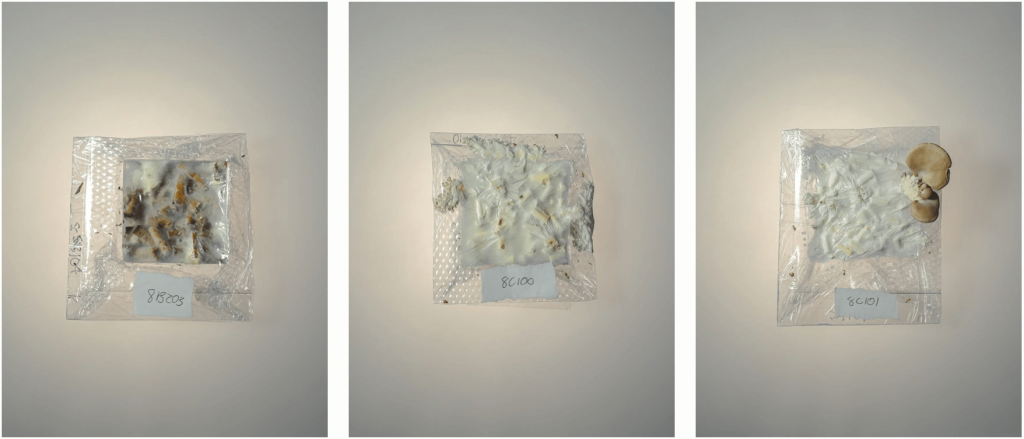
How does Mycelium turn into packaging?
The mycelium expands throughout its food substrate so it will fill whatever space you give it. When you pack that food source into a molded container the shape you want your packaging to be, it will fill that container. The mycelium interlock together forming a really beautiful, airy mesh a bit like foam.
That process takes about 7 days, depending on the size of the mold, and them once demolded you simply heat treat it to stop it growing and render the material inert. Once it’s finished it will actually last more or less indefinitely when kept dry.
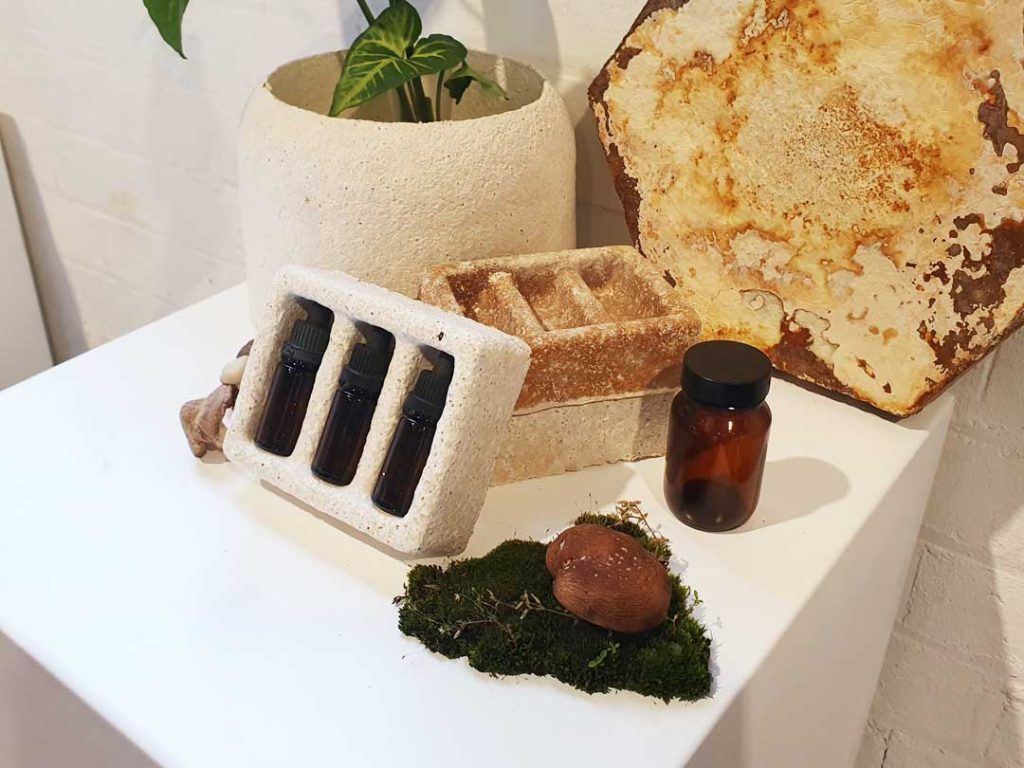
What Properties Does the Resulting Mushroom Packaging Block have?
The finished Mycelium block is really lightweight, durable, very insulating and even has some interesting acoustic and thermal properties. It’s fire retardant up to 300 degrees.
It’s an ideal alternative where you might usually use a large molded foam material like polystyrene. So it basically does everything polystyrene can do, but it’s fire retardant, looks beautiful and organic and is much, much better for the planet!
What happens to the Mushroom Packaging once it’s been used?
That’s the great thing about mycelium packaging, it can either be re-used or home composted. Once it’s been exposed to water, you can chop it up into home compost and it will be completely broken down in about 12 weeks, releasing all of those recaptured nutrients from the original waste material back into the soil. At the same time the mycelium mesh enables the soil to get more aerated, improving the soil texture too. So, when you compost the mushroom packaging it’s in effect regenerative packaging!
What does the process look like to create a new mushroom packaging design & how long would it take get into production?
It's a very much an emerging industry. We currently have a 250 Square meter pilot facility in Thornbury, Melbourne. Currently, the material lends itself to luxury applications in the culinary, wine, cosmetics industries, though we do see the long-term application and much higher impact in replacing all uses of polystyrene.
Fungi Solutions is now doing short runs of up to 250 units per month. To make a new mycelium product means going through a consultation and design process like you would any new product. It usually requires about three to 6 months to get prototypes made and into development. Once you have the mold made, you can run monthly batches. The molds only need to be made once, so like plastic injection molding there’s a good return on that investment.
What other things can mycelium blocks be used for?
Thanks to the mix of amazing properties of the finished product, especially its durability, it has a lot of potential in several industries. It’s quite a bit like cork. For example, acoustic panelling of things like soundproofing the home, but also fire-retardant panelling as well.
Plus, being light weight and soft, we’re starting to see people explore its us in furniture at well. There’s also already a growing industry for mushroom leather, so it can be used in the apparel and footwear industry too.
There are also applications for the fruiting body, the mushroom itself. We can either donate that to community pantries, or if we don’t harvest them quickly enough, we can actually dry those and make into a powder, that can be used as a pulp base to make artisan paper rather than using wood pulp. You can make any grade of paper you like, depending on the mushroom species. For example, Enoki mushrooms can make a beautiful fine soft paper material.

What Positive Impact Can be Generated with Mushroom Packaging?
In terms of impact, Mushroom Packing only uses 15% of the energy to produce compares to polystyrene, and 90% less water, which makes it immediately a less intensive solution to make.
Fungi solutions is really focused on waste management and reprocessing waste into useful products. There many large-scale agricultural waste issues that are real pain points for farmers and growers in terms of waste disposal that we can help with.
For example, wine makers have all the stems, skins and seeds left over from wine production that is called grape mark. Some of that can be composed, but if you compost too much it actually changes the PH of the soil, so most of it goes to landfill, where it rots down, releasing greenhouse gasses. We are exploring the best way to sequester that material as well as giving another resource back to the industry. The packaging we make lends itself nicely to the premium wine industry, so it’s a nice coherent & circular process and story. It also potentially saves on transportation emissions from huge volumes of material being shipped around.
Myco-cycling centres can really be set up anywhere and be small scale, which means there’s a low barrier of entry to getting started in the industry.
What does the next 18-24 months look like for Fungi Solutions?
Lots of testing and certification on the materials for Australian standards across a range of different industries. Then we are looking at scaling up our facility to about a thousand square meter site to be able to process 40 tons of organic waste next year.
Where can people find you if they want to explore Mushroom Packaging further?
Head to the website, fungisolutions.com.au to join our community network, and stay up to date on our projects and commercial scale up. There's also an inquiry form to get on the wait list for 2023.
Top Takeouts
I guess most of us think of Fungi as the mushroom fruiting bodies we see growing on the side of dead tree trunks on a walk through the bush, but when it comes to mushroom packaging, it’s the mycelium, the roots of the fungi that are the hero.
And it turns out that many fibrous substances can form a great food source for the fungi – including anything from agricultural waste to textiles, and even cigarette butts!
When you cram some waste materials into a mold and let the Fungi have at it, in about a week you’ll have a dense mycelium block that has very similar properties to polystyrene.
Its tough, ultra-light weight slightly spongy, thermally resistant and very shock absorbent. That makes it pretty much ideal for keeping fragile materials safe in transit.
Unlike polystyrene, in diverting waste materials from landfill, it’s reducing greenhouse gas emissions, is 90% more carbon efficient to produce, and used only 12% of the energy required to produce the same packaging from polystyrene.
And if all that wasn’t enough, instead of landfill, you can either re-use or compost your mushroom packing, sequestering that carbon and all the nutrients back into the soil. I am sold on the idea of regenerative packaging!
- Nothing goes to waste even the mushroom fruiting bodies that we all know and love can be dropped straight into the human food chain, or even be pulped and used to make artisan paper stock, which is something I certainly haven’t heard of before this show.
Back when I started this show I thought mushroom packaging was cool. But after talking to Amanda, I think it might be one of the most exciting opportunities for removing single use plastics, and I think we’ll start to see a lot more mushroom packaging making its way into the ecommerce supply chain over the next few years.
So I hope you found today’s chat with Amanda as fascinating as I did.





